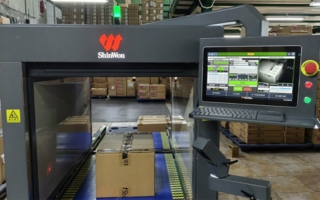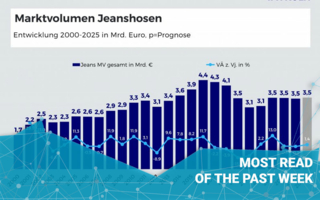28/10/2025 – SCM software — auf Deutsch lesen
6 key shifts reshaping supply chain management
Based on conversations with customers, Ralf Duester, Managing Director of SCM software specialist Setlog, outlines the steps companies plan to take to future-proof their supply chains.
Political changes, environmental disasters, and trade conflicts have become part of the “new normal”, forcing supply chain leaders to stay agile and ready to adapt. The toughest challenge: they must confront all these unpredictable disruptions at once. Insights from Setlog’s customer base reflect this reality, with more than 150 global brands relying on its SCM software OSCA to manage their supply chains.
Artificial intelligence (AI) as a major competitive advantage
Machine learning and AI are rapidly reshaping suppy chain management. Companies are harnessing vast amounts of data and advanced technologies to make real-time decisions, shifting from reactive to proactive management. Modern business intelligence (BI) tools now collect and process ever-larger data sets, streamlining and optimizing decision-making across organizations. This evolution is giving rise to new roles for integrative supply chain architects who break down traditional silos and replace isolated functions. Data will flow seamlessly across departments and even between companies. For early adopters the payoff is clear: stronger resilience and a powerful competitive edge, as AI unlocks the full value of the entire supply chain.
The rise of micro-fulfillment
Retailers are increasingly treating their stores as vital parts of their fulfillment networks. This shift is driving adoption of human-guided, tech-enabled processes. Logistics centers remain essential, but models like buy-online-pickup-in-store (BOPIS) models and micro-fulfillment solutions that leverage local inventory are gaining ground. These concepts have caused quite a stir in recent years. We are now seeing practical solutions to put these strategies into action. In the omnichannel space, both retail and industrial companies are moving toward professional push and pull systems, either integrated into intralogistics platforms or run through dedicated logistics centers.
Contingency planning takes center stage
Supply chain managers are shifting from constant crisis mode to a focus on fundamentals like efficiency, automation, and return on investment. Strategic investments in automation are now a priority, while contingency planning has become part of the daily routine. To strengthen resilience, IT teams are leveraging AI-driven technologies to identify potential disruptions and implement real-time solutions.
Why flexible automation matters now
Companies increasingly need technologies, especially AI-driven solutions, that can adapt as conditions change. Businesses no longer want to think about rigid specifications. Instead, they are turning to solutions that can be configured over time, enabling them to adjust quickly and keep pace with shifting demands.
Strategic insourcing of critical processes
The Fourth Party Logistics (4PL) model for orchestrating logistics services is gaining ground. By outsourcing selected activities, companies can sharpen their focus on core competencies. While at the same time bringing neglected but critical tasks back in-house when disruptions make them a priority. More and more business leaders are recognizing the strategic value of critical processes and data, moving to insource functions that give them greater control, security, and flexibility. A prime example is Apple, which has steadily brought chip design back under its roof. With the development of its M1 and M2 processors, Apple reduced dependence on external suppliers, boosted performance, and aligned technological innovation with its own strategic goals. This shift empowers management to better safeguard sensitive data, increase efficiency, and future-proof their operations.
Smarter information delivery
Supply chain managers no longer want prescriptive analyses that dictate what to do. Instead, they expect transparent, actionable insights that are easy to apply. Companies that build decision-making on real-time data are proving more resilient and can adaptable. As AI and automation evolve, managers are focusing on making informed choices rather than on prescribed measures. A recent example came during the congestion of container ships at North Sea ports: companies with transparent supply chains and real-time analytics responded with agile strategies, gaining a clear edge over competitors.





